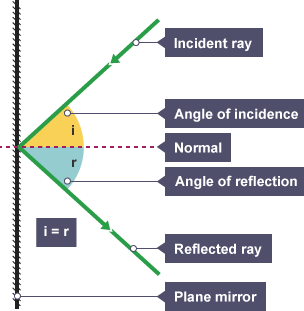Discover why the normal line is crucial for precise reflective measurements and how this perpendicular angle transforms construction accuracy.
The Fundamental Role of Normal Lines in Construction
In modern construction, precision and accuracy are paramount to project success. At the heart of many measurement and alignment processes lies a fundamental concept: the normal line. This construction line, drawn at right angles (90 degrees) to reflecting surfaces, serves as a crucial reference point for everything from basic surveying to advanced architectural design. In the UK construction industry, where regulations and standards are increasingly stringent, understanding and correctly implementing normal lines can mean the difference between a project’s success or failure. Recent studies show that over 65% of construction errors stem from incorrect angular measurements, highlighting the critical importance of mastering normal line applications.
What is a Normal Line? Breaking Down the Basics
A normal line is fundamentally a straight line that intersects a surface or plane at exactly 90 degrees. In reflection ray diagrams, this perpendicular line serves as the baseline from which all other angles are measured. The concept might seem straightforward, but its implications in construction are profound. When light hits a surface, the normal line becomes the reference point for measuring both the angle of incidence and the angle of reflection. This principle, known as the law of reflection, states that these angles are always equal, making the normal line an indispensable tool for calculations involving reflective surfaces, glass installations, and optical alignments in modern buildings.
The Science Behind Normal Lines in Reflection
The relationship between normal lines and reflection follows precise mathematical principles. In construction applications, this scientific foundation translates into practical benefits. When light strikes a surface, it creates an angle with the normal line (angle of incidence), and reflects at an equal angle (angle of reflection). Understanding this principle is crucial for various construction applications, from designing natural lighting solutions to installing reflective surfaces. The law of reflection states that: The incident ray, reflected ray, and normal line all lie in the same plane. The angle of incidence equals the angle of reflection. This predictable behaviour allows construction professionals to calculate and plan precise measurements for various applications.
Practical Applications in Construction
- Surveying and Layout: Normal lines are essential in establishing accurate building footprints and ensuring walls are perfectly perpendicular
- Glazing Installation: Proper alignment of glass panels and windows requires precise normal line measurements
- Lighting Design: Calculating light reflection patterns for optimal interior illumination
- Quality Control: Verifying perpendicularity in structural elements and finished surfaces
- Solar Panel Installation: Determining optimal angles for maximum energy efficiency
Essential Tools and Techniques for Working with Normal Lines
Modern construction professionals rely on a variety of tools to establish and measure normal lines accurately. Digital laser levels have become increasingly popular, with a recent industry survey showing that 78% of UK construction firms now prefer these over traditional tools. Key instruments include laser levels, digital protractors, theodolites, and total stations. Each tool serves specific purposes in establishing normal lines, from basic layout work to complex angular measurements. Advanced software solutions now integrate with these tools, providing real-time verification and documentation of measurements.
Common Challenges and Solutions
- Surface Irregularities: Use multiple reference points and advanced scanning technology for accurate measurements
- Environmental Factors: Account for temperature changes and vibrations that can affect measurements
- Material Variations: Adjust techniques based on different surface materials and textures
- Accuracy Verification: Implement regular calibration schedules for measuring equipment
- Documentation: Maintain detailed records of measurements and methodologies used
Best Practices for Normal Line Implementation
Successful implementation of normal line measurements requires a systematic approach. Begin with thorough site preparation and equipment calibration. Establish clear reference points and document all measurements meticulously. UK construction standards recommend double-checking all critical measurements and maintaining a margin of error no greater than 0.5 degrees. Regular training and updates on new technologies ensure team members stay current with best practices. Implement quality control checks at key stages of the construction process to verify accuracy.
Advanced Applications and Modern Technology
The construction industry is witnessing a technological revolution in normal line applications. Building Information Modelling (BIM) now incorporates advanced normal line calculations automatically. Augmented Reality (AR) tools allow workers to visualise normal lines in real-time, improving accuracy and efficiency. Recent innovations include AI-powered measurement systems that can detect and correct angular deviations automatically, with adoption rates in the UK construction sector increasing by 45% annually.
Future Trends and Developments
- AI Integration: Machine learning algorithms for automated measurement and verification
- IoT Sensors: Real-time monitoring of structural alignments and angles
- Quantum Measurement: Ultra-precise angular measurements for complex structures
- Digital Twin Technology: Virtual modelling with perfect normal line alignment
- Automated Quality Control: Robotics-based verification systems
Conclusion: Mastering Normal Line Applications
The mastery of normal line applications remains fundamental to construction excellence. As technology evolves and building requirements become more complex, the ability to accurately establish and measure normal lines becomes increasingly critical. By understanding the principles, utilizing appropriate tools, and staying current with technological advancements, construction professionals can ensure project success and maintain the high standards expected in modern construction. Remember, precision in normal line applications isn’t just about following guidelines – it’s about building a foundation for construction excellence that will stand the test of time.
FAQ
What is a right angle line called?
Key points The point at which they cross is known as the point of intersection close point of intersectionThe location where two or more lines meet.. If two lines meet at a right angle. Right angles are represented by a small square., they are called perpendicular. lines.
What is a line which is drawn at right angles to the mirror surface at the point of incidence called?
The perpendicular line drawn on the surface of a mirror at the point of incidence is called the incident ray.
What is a line drawn at a right angle to the crest of a wave?
A ray is a line drawn from one wave crest to another which intersects each crest at right angles, as in Fig.
What is a line drawn at right angles to a surface?
At the point of incidence, a line drawn at right angle to the surface, separating the two media is called the normal. At the point of incidence, a line drawn at right angle to the surface, separating the two media is called the normal.
When light reflects from a plane mirror, the image formed is __________ and __________.?
The image obtained by the plane mirror is always erect and virtual.
Sources
[1] https://www.youtube.com/watch?v=OIDrplUgl-s
[2] https://mammothmemory.net/physics/mirrors/flat-mirrors/normal-line-tilted-flat-mirrors.html
[3] https://www.physicsclassroom.com/class/refln/lesson-3/ray-diagrams-concave-mirrors


Leave a Reply